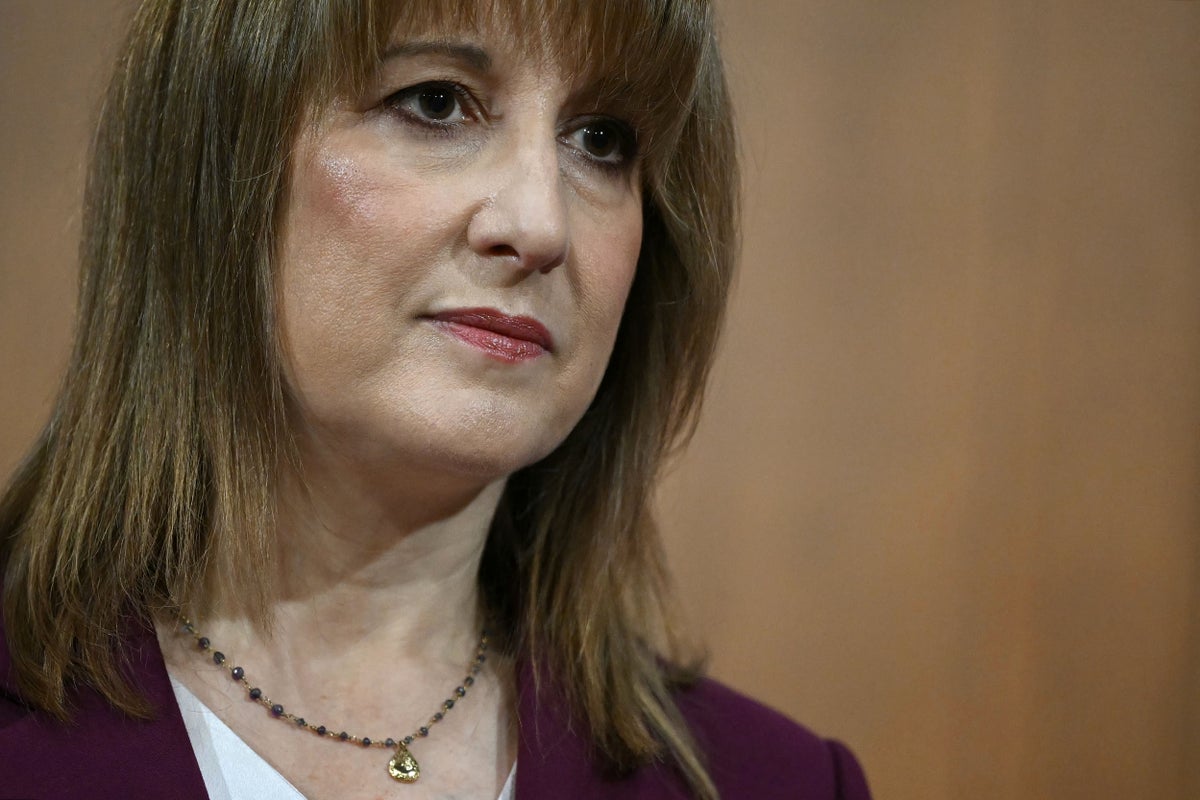Business
Gold Loan Tips: 3 Repayment Tricks That Can Save You A Fortune

Last Updated:
Three repayment choices, one crucial decision — and the difference could cost you lakhs. Pick wisely, and a gold loan becomes far lighter on both your mind and your pocket
Selecting the right gold loan repayment method can save you money. (AI Generated)
Gold loans may be easy to take, but they are not always easy to repay, and a small mistake can cost borrowers thousands, even lakhs, in extra interest. Most people focus only on the 9-10 per cent interest rate, unaware that the real cost depends entirely on the repayment method they choose.
One wrong decision can make a cheap loan expensive; the right one can make it far more affordable.
According to an Economic Times report, Jijith Raj, Business Head at Indel Money, has explained three loan repayment methods and who each of them is best suited for.
1. Regular EMI
In this method, you pay a fixed instalment every month, which includes both principal and interest. As the months pass, the principal reduces, and the total interest you pay is the lowest among the three options.
This method is ideal for people who earn a regular monthly income like salaried employees, pensioners, or those receiving steady rental income. Setting up an auto-debit ensures discipline.
However, if you miss even a single EMI, the bank may quickly classify your account as an SMA and report it to the credit bureau, which can lower your CIBIL score.
2. Bullet Repayment
This is the option most people prefer because it gives them the highest level of flexibility. You may pay nothing or only the interest during the loan period, and then clear the entire principal and remaining interest in one go on the final day. This method works well if you are certain that you will receive a large sum within 6-12 months, such as from selling property, an FD maturing, or a sizeable business payment.
But the risk is high: if you are unable to arrange the lump sum by the due date, the interest balloons because the full principal remains unpaid.
Moreover, 45 days after the loan period ends, the bank can begin the process of auctioning your gold, which catches many borrowers off-guard.
3. Overdraft Facility
This option may appear slightly more expensive upfront, but it is perfect for those with irregular income like freelancers, small shop owners, agents who work on commission, consultants, and similar professions.
The bank sanctions a limit (for example, Rs 10 lakh), and you pay interest only on the amount you actually withdraw, not on the entire limit. When you receive money, you can deposit it back instantly, and your interest reduces immediately. You can withdraw and deposit as many times as you wish.
If you need a top-up, it is usually granted without closing the existing loan. Although the interest rate might be a bit higher, the overall cost remains low because your outstanding balance typically stays small.
Which Method Saves The Most?
- If your income is steady, choose EMI as it results in the lowest interest outflow.
- If you are expecting a lump sum, bullet repayment can work but it is risky.
- If your income is irregular, opt for the overdraft facility, which keeps your interest under control.
A crucial tip: If you have chosen the wrong repayment scheme earlier and a major portion of your loan tenure still remains, close the old loan and take a new loan against the same gold under a better scheme.
Most companies do not charge foreclosure fees, but always confirm this before proceeding.
November 15, 2025, 11:42 IST
Read More
Business
DAMAC Properties Unveils Master Development, Launches New Sales Office In Egypt

Last Updated:
DAMAC launched DAMAC Islands 2 and a new Cairo office at the Grand Egyptian Museum, with Hussain Sajwani and Amira Sajwani hosting. Omar Khairat performed.

DAMAC (Representative Image)
DAMAC marked the launch of its new master development DAMAC Islands 2 and its new sales office opening in Egypt with a grand celebration in Egypt at the magnificent Grand Egyptian Museum, an architectural and cultural marvel overlooking the Pyramids of Giza. The glittering evening set against the backdrop of ancient history was hosted by Hussain Sajwani, Founder and Chairman of DAMAC Group, and Amira Sajwani, Managing Director of DAMAC Properties, who welcomed an audience of dignitaries, global investors, media, brokers, and VIP guests from across the world.
Guests at the event were given an exclusive preview of DAMAC Islands 2, the latest luxury community in Dubai, inspired by eight tropical island destinations. The project followed the phenomenal success of DAMAC Islands 1 in 2024, which achieved a record-breaking sell-out. DAMAC sold AED 10 billion in inventory, generating the highest revenue from a real estate launch in 24 hours, as recognised by the Guinness World Records.
The evening’s headline act was legendary Egyptian musician Omar Khairat, who regaled the audience with a captivating fusion of classical, jazz, and traditional Arabic music. Hadi Awada presented a thrilling, choreographed performance.
Hussain Sajwani, Founder of DAMAC Group, said: “This grand celebration and our presence in Cairo represents an affirmation of our deep connection with Egypt. This market has long been one of our most dynamic and promising markets. We’re here to bring DAMAC’s international portfolio closer to Egyptian investors who seek both quality and long-term value.”
Amira Sajwani, Managing Director of DAMAC Properties, noted: “Egyptians already rank among the top ten nationalities purchasing DAMAC homes. We have witnessed double-digit sales growth in this market and expect it to rise another 20% in 2026. Opening our Cairo office also brings us closer to our clients and strengthens the bridge between Cairo and Dubai, the two powerhouses of real estate investment in the MENA region.”
Dubai’s real estate market remains one of the world’s most active and attractive amongst investors and residents alike – with H1 2025 transactions up 40% year-on-year, reinforcing DAMAC’s position at the intersection of two of the region’s most vibrant markets. Furthermore, DAMAC communities continue to lead market performance, with DAMAC Islands recording 4,185 villa and townhouse sales in H1 2025 and DAMAC Hills 2 registering 1,942 sales.
On average from launch, price growth at DAMAC Hills 1 townhouses rose 86 per cent, DAMAC Hills 1 villas 72 per cent, DAMAC Hills 2 townhouses 60 per cent, and DAMAC Islands villas 29 per cent, demonstrating sustained investor confidence in the brand’s long-term value.
DAMAC Islands 2 brings the rhythm of the tropics to the heart of Dubai; blending lush landscapes, crystal lagoons, and wellness-driven design inspired by eight dream destinations: Antigua, Bahamas, Barbados, Bermuda, Cuba, Maui, Mauritius, and Tahiti. As part of the launch campaign for DAMAC Islands 2, DAMAC also launched a unique global competition to become ‘The Ultimate Islander’.
The competition winner will receive an all-expenses-paid trip and become an employee of DAMAC while living on one of their eight islands. The master-planned project will comprise six-bedroom luxury villas of approximately 583 square meters, five-bedroom twin villas of approximately 324 square meters, five-bedroom townhouses of approximately 293 and 263 square meters, and four-bedroom townhouses of approximately 203 square meters. Prices start at AED 2.7 million.
A team of writers and reporters decodes vast terms of personal finance and making money matters simpler for you. From latest initial public offerings (IPOs) in the market to best investment options, we cover al…Read More
A team of writers and reporters decodes vast terms of personal finance and making money matters simpler for you. From latest initial public offerings (IPOs) in the market to best investment options, we cover al… Read More
November 15, 2025, 13:25 IST
Read More
Business
Tata Motors Demerger Complete: Selling Shares now? Tax Expert Warns Of CV-Gain, PV-Loss Twist

Last Updated:
Tata Motors completed its demerger, listing Tata Motors Ltd for commercial vehicles. Shareholders get tax-neutral shares, with gains taxed only on sale.

Tata Motors Demerger
Tata Motors Demerger: Tata Motors Limited, the commercial arm of the automobile, has begun trading on November 12. Shares of Tata Motors Commercial Vehicles Ltd (TMCVL) made their stock market debut at Rs 335 apiece on NSE, a premium of 28.48% to its implied value of Rs 260.75 per share. Shares dropped to end at Rs 317.60 apiece.
The listing follows the Tata Motors demerger, which officially came into effect on October 1, 2025. Under the plan, shareholders received one share of Tata Motors Commercial Vehicles Ltd for every share held in Tata Motors as of the record date, October 14, 2025.
Post-restructuring, the Commercial Vehicles (CV) business has been renamed Tata Motors, while the Passenger Vehicles (PV), Electric Vehicles (EVs), and Jaguar Land Rover (JLR) businesses now operate under Tata Motors Passenger Vehicles Ltd (TMPV), which is already listed as a separate entity.
The good news is that receiving these new shares is not taxable. Since the split took place under a court-approved demerger, Section 47 of the Income Tax Act treats this as “tax neutral”, meaning there is no transfer and no tax is triggered at the time of allotment.
What Happens If You Sell These Shares?
But, investors must know that these shares will be taxable if you sell them.
Sujit Bangar, the founder of taxbuddy.com, has explained the demerger taxation in his X post.
Tata Motors has officially declared the cost allocation ratio for the two new entities:
- 31.15% of your original cost goes to the CV company
- 68.85% goes to the PV company
This split must be followed exactly while calculating capital gains.
For example, an investor who originally bought 1,000 Tata Motors shares at Rs 660 each had a total cost of Rs 6,60,000. After applying the official ratio, the revised cost becomes:
- TMCV: Rs 2,05,590
- TMPV: Rs 4,54,410
If these shares are sold at the current market prices—Rs 318 for Tata Motors and Rs 391 for Tata Motors Passenger Vehicle—the investor ends up with:
- Gain of Rs 1,12,410 on the CV company
- Loss of Rs 63,410 on the PV company
- Net long-term gain: Rs 49,000
Tata Motors has 66,55,766 shareholdersThey’ve completed a demerger and recently declared the cost of both companies
Before you rush to sell, you may have gains in the CV entity but a loss in the PV entity.
Here’s all that you need to know about your demerger taxation 👇🧵 pic.twitter.com/7fkCN8SQUs
— Sujit Bangar (@sujit_bangar) November 14, 2025
The original holding period of Tata Motors carries forward for both companies. This decides whether the gain is short-term or long-term.

Varun Yadav is a Sub Editor at News18 Business Digital. He writes articles on markets, personal finance, technology, and more. He completed his post-graduation diploma in English Journalism from the Indian Inst…Read More
Varun Yadav is a Sub Editor at News18 Business Digital. He writes articles on markets, personal finance, technology, and more. He completed his post-graduation diploma in English Journalism from the Indian Inst… Read More
November 15, 2025, 10:40 IST
Read More
Business
What is the two-child benefit cap and how could it change?

 Getty Images
Getty ImagesThe two-child limit means many low-income families do not receive further benefits when they have a third or subsequent child.
It has been the subject of intense political debate and speculation, with Chancellor Rachel Reeves hinting at changes in the Budget.
So how does the system work and what might happen?
What is the two-child cap and how many people does it affect?
The policy, introduced by Conservative chancellor George Osborne, means parents can only claim universal credit or tax credits for their first two children.
It applies to third or subsequent children born after 6 April 2017.
A total of 1.6 million children are living in larger families who cannot claim these means-tested benefits as a result.
If the cap had not been introduced, affected families could have received an average of £4,400 in benefit entitlements a year, roughly a tenth of their total disposable income, according to the Institute for Fiscal Studies (IFS).
The think tank estimates the policy will ultimately save the Treasury about £3.6bn a year.
So it has nothing to do with child benefit?
Correct. There is often a misconception that the two-child limit affects the payment of child benefit, because it is called the two-child benefit cap.
So, take a breath between “two-child” and “benefit”.
This policy is specifically directed at universal credit and tax credits, not child benefit.
How does the cap work?
If you receive universal credit or tax credits then, generally, you won’t be paid any additional benefit if you have or had a third or subsequent child born after 6 April 2017.
If you have, for example, four children born before that date, then you will still receive the additional payments. That relates to children aged under 16, or young people aged under 20 who are in full-time education or training.
There are other exceptions.
If a parent, or parents, have one child, and the next are twins or triplets, then a claim can be made for all these children.
Claims can also be made if children are born after rape, or from a coercive relationship. Payments can also go to children who are adopted, in your care rather than local authority care, or are a child of your child.
Why have some criticised the cap?
More than 100 charities have written to the chancellor to call for the two-child limit to be scrapped.
A host of backbench Labour MPs want the chancellor to scrap it, arguing that it would bring hundreds of thousands of children out of poverty.
However, in doing so, a gap would be created in savings for the Treasury. The money would probably need to be found in cuts elsewhere, through tax rises, or from increases in government borrowing.
The Conservatives support the cap, saying it makes the system fairer, and means parents on benefits face the same financial choices as parents who fund themselves solely through work.
What could change in the Budget?
The chancellor hinted at changes when she told the BBC it was not right that children in bigger families were “penalised” through “no fault of their own”.
She has options beyond simply scrapping the policy entirely.
The benefit could be given to all families irrespective of the number of children, but at a lower level.
The chancellor could also offer partial payments, potentially getting smaller for each additional child to reflect that these children might use the same buggy as their siblings or hand-me-down clothes.
She could also cap the benefit payments at a higher number of children.
-

 Entertainment1 week ago
Entertainment1 week agoChina unveils£5.4 bn Fujian, its most advanced aircraft carrier yet
-

 Politics1 week ago
Politics1 week agoIDF lawyers warned of possible Gaza war crimes: US intel findings
-

 Entertainment1 week ago
Entertainment1 week agoRobert Pattinson jokes about competing with Gen Z
-

 Tech1 week ago
Tech1 week ago‘Vibe coding’ named word of the year by Collins dictionary
-

 Sports1 week ago
Sports1 week agoWho’s the striker beating Mbappé, Haaland in race for European Golden Shoe?
-

 Business1 week ago
Business1 week agoBudget tax hikes could see food prices soar, major supermarket boss warns
-

 Tech1 week ago
Tech1 week agoWhy fears of a trillion-dollar AI bubble are growing
-

 Tech1 week ago
Tech1 week agoThe Government Shutdown Is a Ticking Cybersecurity Time Bomb






